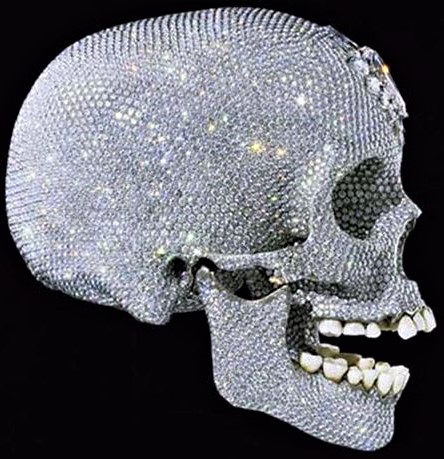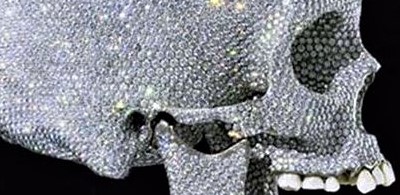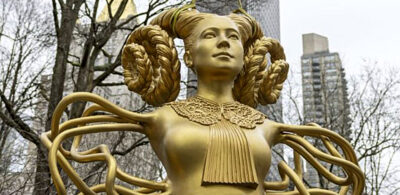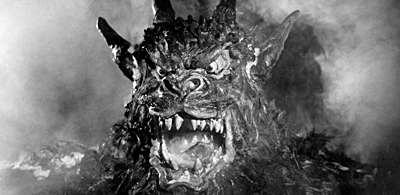Bizarro World & its Art Critics
Postmodern art is ostensibly challenging and aggressively cerebral, but I find it mostly hollow, complacent and ultimately tied to centers of power. Many disagree with me, but this antagonism between camps was effusively illustrated in a Guardian article titled, Best of British? Art critic Jonathan Jones used his special brand of seething anti-populist rhetoric to heap scorn upon graffiti artist Banksy… and in large part I agree. Banksy is a cynical opportunist. Jones wrote:
“(….) this isn’t about talent or lack of talent. One of Banksy’s most irritating attributes is his conservatism, as an artist who seems proud of the fact that he ‘draws’, rather than just making ‘concepts’. He appeals to people who hate the Turner prize. It’s art for people who think that artists are charlatans. This is what most people think, so Banksy is truly a popular creation: a great British commonsense antidote to all that snobby pretentious art that real people can’t understand.”
Obviously what so disturbs Mr. Jones is the visage of an artist who even now, does not abandon the conviction that drawing is at the core of art. Even a threat posed by an anonymous graffiti artist must be quarantined and purged. Not satisfied with simply attacking drawing as an example of an archaic “conservatism,” Jones resorts to bullying readers into supporting his postmodernist position.
Sneering about the unsophisticated rabble turning their backs upon his vaunted conceptualists is clearly meant to manipulate readers, after all, who wants to be seen as an unrefined simpleton? The poisonous contempt displayed by Jones for “what most people think” about contemporary art reveals an autocratic mindset that is dead set against pluralism. One gets the feeling that if Rembrandt were alive today, Jones would rebuke him for his draftsmanship, or at least lecture the old master on the need to create paintings filled with unattractive and ironic subject matter.
Mr. Jones lives on Bizarro World, a topsy turvy cube-shaped planet where individuals who can neither paint nor draw are considered remarkable artists. At the close of his article, Jones praises conceptualist Damian Hirst as a suitable artist to go into raptures over, yet there is no clearer example of hucksterism to be found than in the works of that unrivaled leader of the postmodernist art movement. At the same time Jones credits Banksy and his admirers for the demise of art:
“Perhaps the rise of Banksy is the fall of Art – that is, the waning of art as the force it has been in recent culture. A decade ago, the art of the Damien Hirst generation pushed itself into anyone’s view of what was happening in Britain. Probably the rise of Banksy means that moment is coming to an end; people care more about other things. (….) The reason to admire Damien Hirst is that he makes art as if art mattered. In Banksy, the philistines are getting their revenge.”
And there we have it. Banksy and his pranks certainly do represent the fall of art. But to Jones the fall came not with the animals pickled in formaldehyde brought to us by Damian Hirst, no, it came because some miscreant street graffiti artist wouldn’t stop drawing realistically. As an art world gatekeeper, Jones will continue to peddle this cock-and-bull story, but is anyone reading this actually prepared to tell me with a straight face that he’s 100% correct?
That more people might prefer the realistic stencil art of an insolent street artist like Banksy over the stuck-up narcissistic crap generated by Hirst and his peers, seems to strike panic into the likes of Jones, whose only reading of the situation is that people are “philistines.”
Media hoopla has crowned Damian Hirst “the world’s most expensive living artist” because his works now sell for the highest bids at auction houses. In June of 2007, Sotheby’s sold a Hirst designed pill cabinet for $19.2 million to an anonymous buyer. Supposedly an allegory on the four seasons, the 10-foot wide steel cabinet is titled Lullaby Spring, and its shelves hold 6,136 hand painted pills. Goodness knows what the unnamed purchaser intends to do with the pricey pill cabinet, perhaps donate it to a hospital?
The most recent artwork from the artist’s studio, a diamond encrusted skull titled For the Love of God, that lays bare the soulless, hyper-commercialist nature of postmodern art for all to see. The skull premiered at Hirst’s recent “Beyond Belief” solo show at London’s White Cube gallery, an exhibit by the way, that made $250 million in sales during its five week run – excluding sale of the skull, which is rumored to still be under negotiation.
Naturally Jonathan Jones waxes poetic in his adoration of Hirst’s latest, and he asks fawningly, “What is being born, exactly? It might be the art of the 21st century.” But if Hirst’s art matters… then it can only be of importance to billionaires.
Based on a platinum casting of an 18th century human skull found in a taxidermy shop, For the Love of God is covered with over 8,000 diamonds and its asking price is $100.5 million, making it the most expensive artwork ever created. Hirst and his dealer, Jay Jopling, put up the $24 million required to create the artwork, and then contracted jewelers Bentley & Skinner to inlay the precious stones.
In fact, so many diamonds were used in the project that Hirst brags their “price went up as we bought them.” Bentley & Skinner profess their work is the largest diamond piece created since the Crown Jewels of the British monarchy.

Let’s not fool ourselves into thinking such a business deal has anything to do with art or the uplift of humanity. Simply put, Hirst’s works are the preferred art of the corporatocracy.
Hirst insists his diamond covered skull is a statement about “the maximum celebration you could make against death,” but to those of us who don’t reside on Bizarro World, words from one of Banksy’s stenciled rats provide the best summation of Hirst’s work… “so little to say.”






